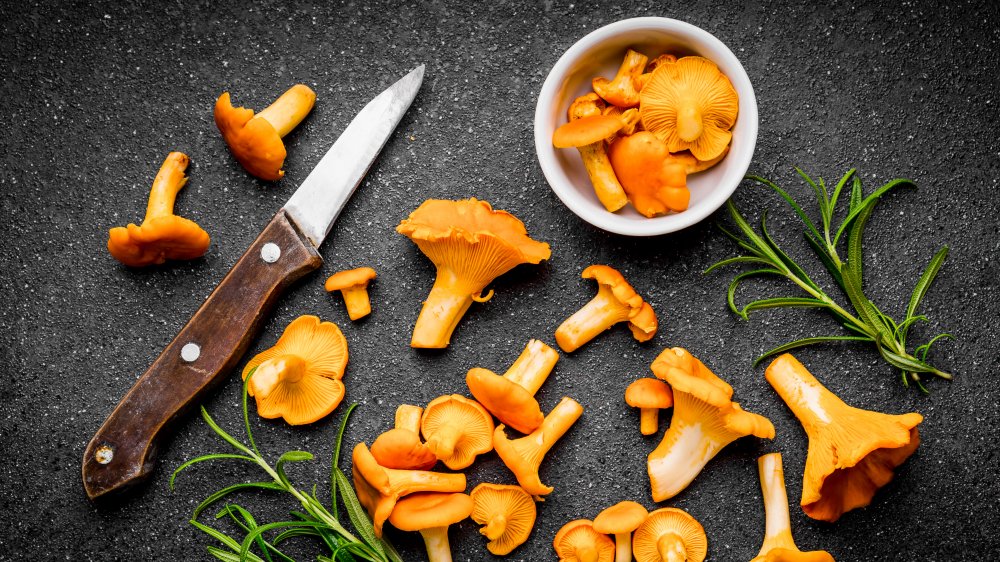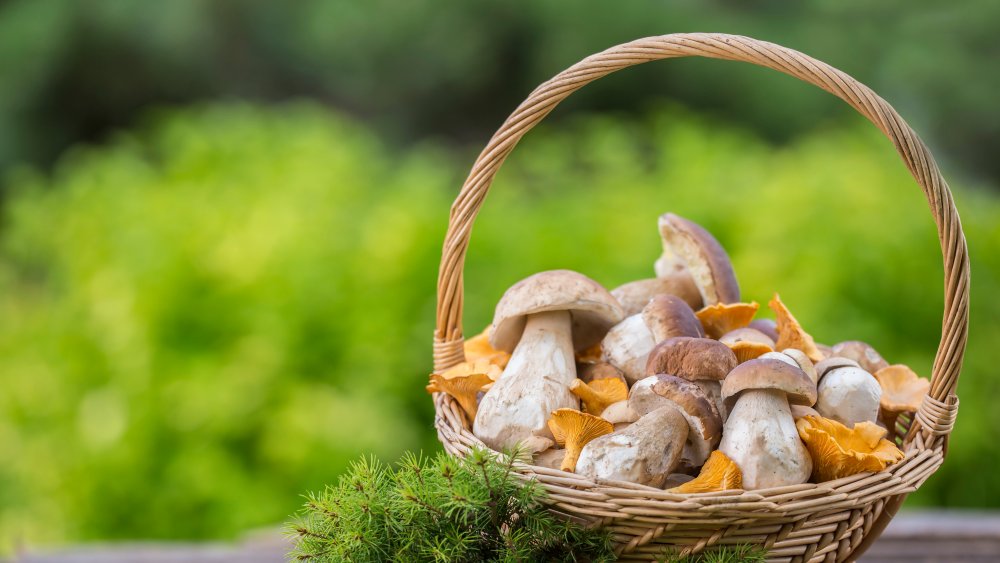Delicious Mushroom Types You've Probably Never Heard Of
With all of the benefits that mushrooms have to offer, it's kind of a shame that they seem relegated to being folded into a marsala sauce or thinly sliced on a piece of pizza. While there are 10,000 types of known mushroom species growing in North America (via Mushroom the Journal), judging from the fungi departments of supermarkets, one would think that portobellos and creminis are about as exotic as things can be. The lack of variety offered could very well have to do with the fact most mushrooms out there aren't suited for culinary purposes. By that, we mean that they're either poisonous or just unpalatable. Mushroom the Journal claims that only four percent fall into the tasty category while 25 percent are "edible, but not incredible."
To go on an exotic mushroom investigation, discerning the difference between cultivated and harvested or foraged fungi is a good place to start. Commercially cultivated mushrooms are grown on farms in dark mushroom houses (via Farm Flavor). These are the places that produce most of the commonly enjoyed mushroom varieties that go into everything from your cream of mushroom soup to portobello burgers.
Wild mushrooms are unearthed via a scavenger hunt method, where foragers head into mushroom friendly-environments like shady forests and handpick their haul. Since different wild mushrooms thrive in different sorts of weather conditions, hand-harvested fungi are available year-round (via Mushroom Huntress).
Head into the woods and beyond button mushrooms
A few chef favorites include morels, an early spring variety with a honeycomb cap, and lacy yellow chanterelles can be found from late summer into fall. Both of these wild mushrooms are enjoyed best fresh, simply sautéed or tossed into pasta to bring out their woodsy, aromatic qualities. A family of mushrooms known as Oysters thrives throughout the year in the wild and includes six unique types that come in a range of colors, flavors, and shapes (via Curative Mushrooms). Their name comes from their oyster-like shape, and they are often used in stews or seafood recipes. A standout in the family is the King Trumpet, a striking, curvy specimen that possesses a serious umami taste when cooked. Members of the Oyster family can be cultivated or found in the wild.
The chicken of the woods mushroom is said to "taste like chicken" (via ZMEScience). One of the most fascinating preparations involves pan-frying the mushrooms to a crisp a la chicken fried steak (via Forager Chef). Many mushrooms have an earthy, at-home-in-the-forest appearance. But the enoki – a cultivated Japanese fungus – looks as though it belongs underwater, perhaps nestled in a coral reef. They grow in clusters of long, thin stems with tiny round caps. Enokis are sweet, crunchy, and mild, making them a perfect addition to hot pots and bowls of ramen (via Healthyish).

